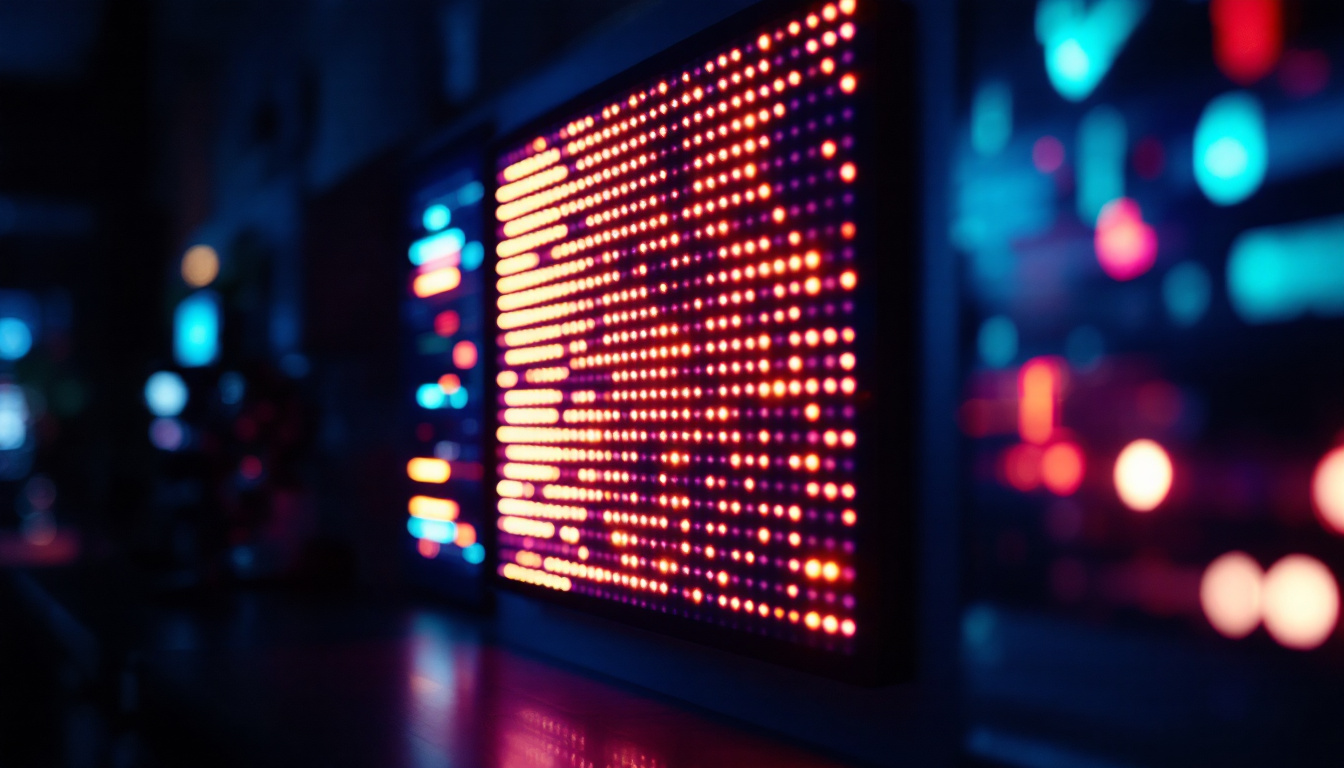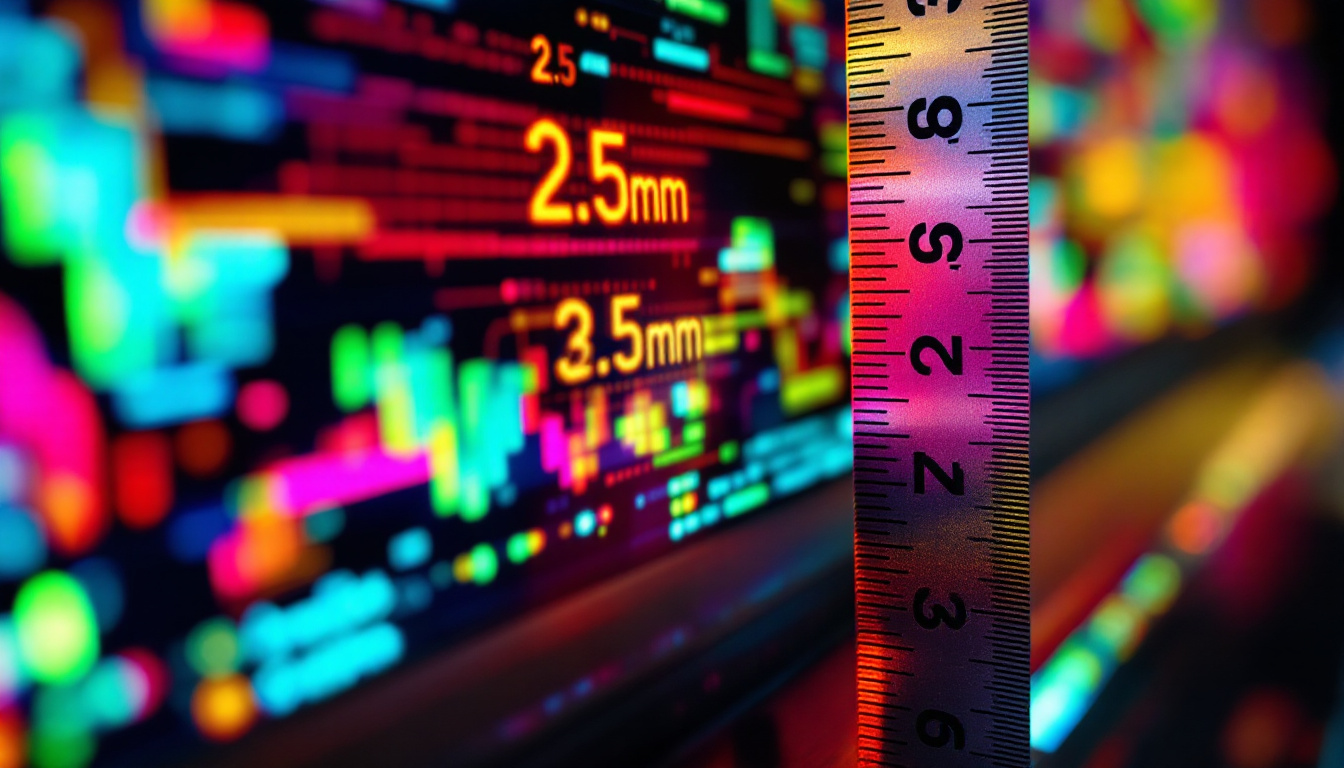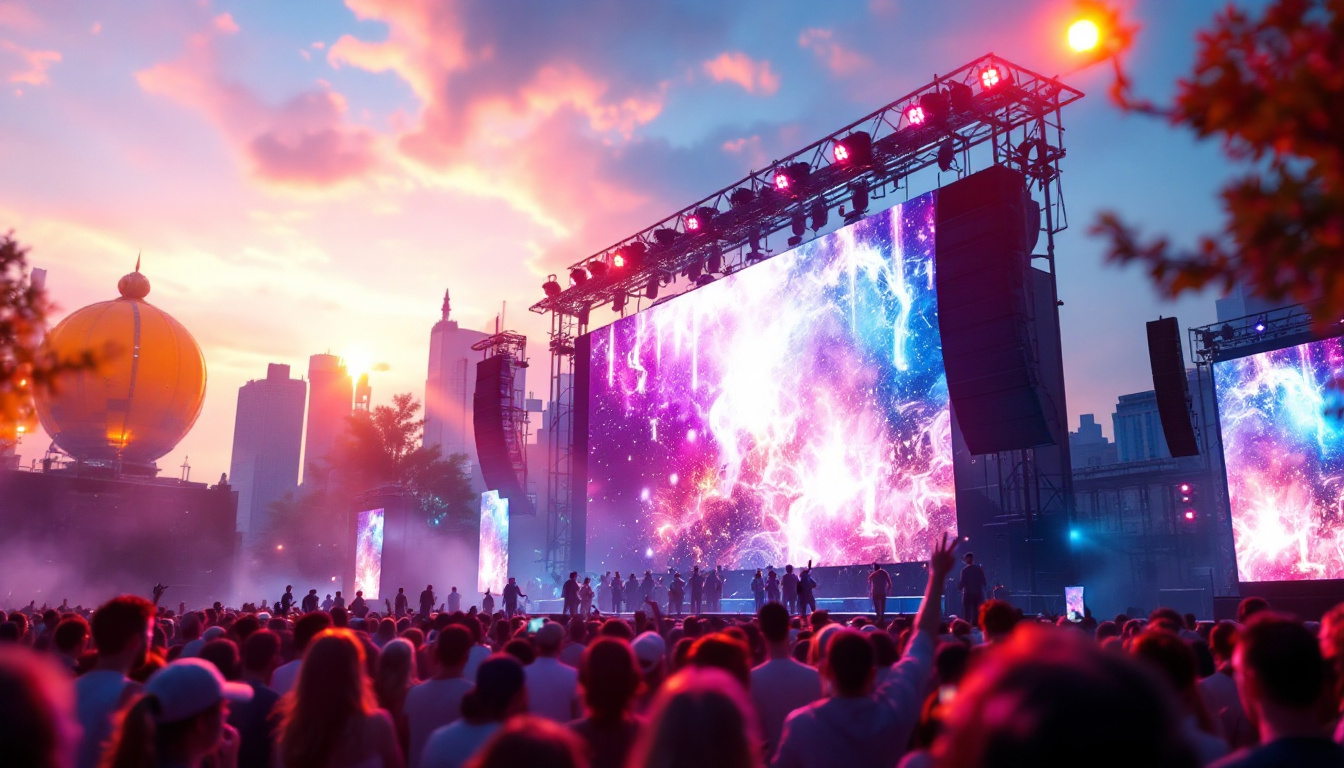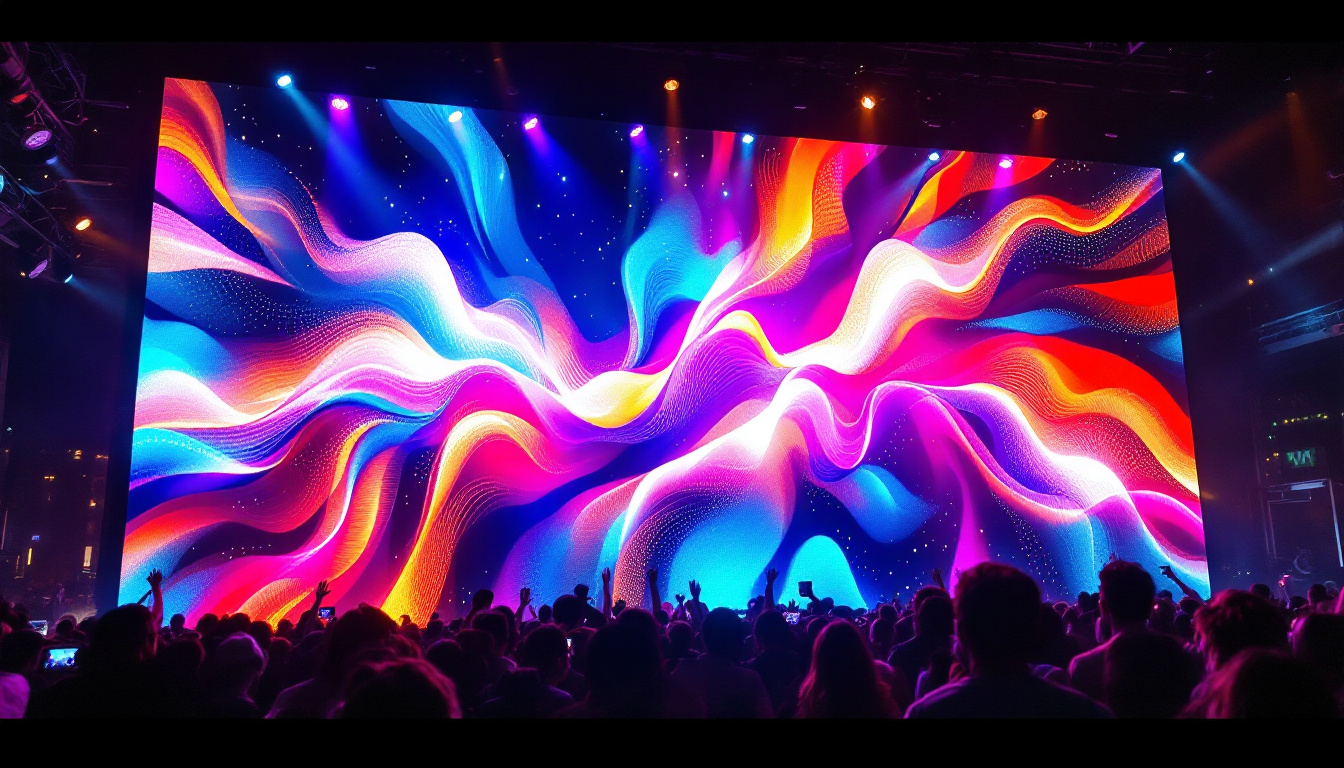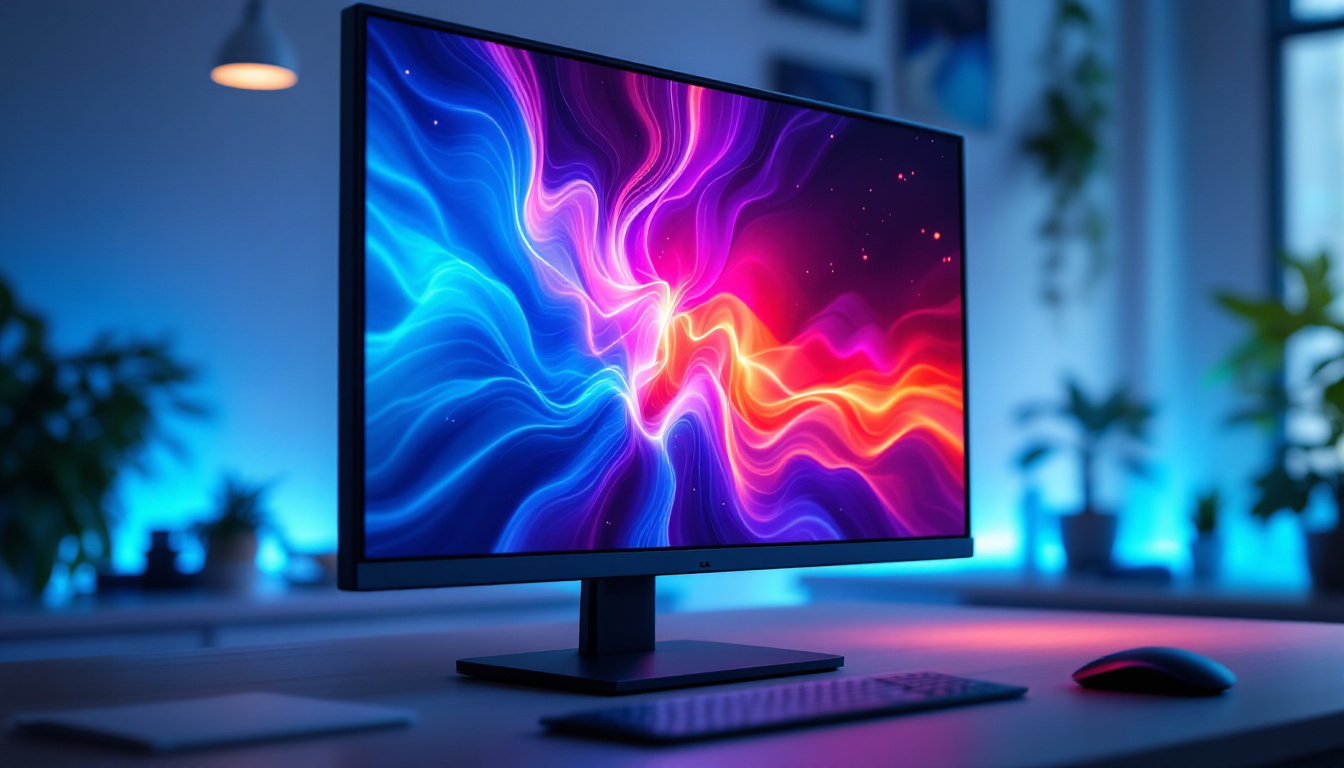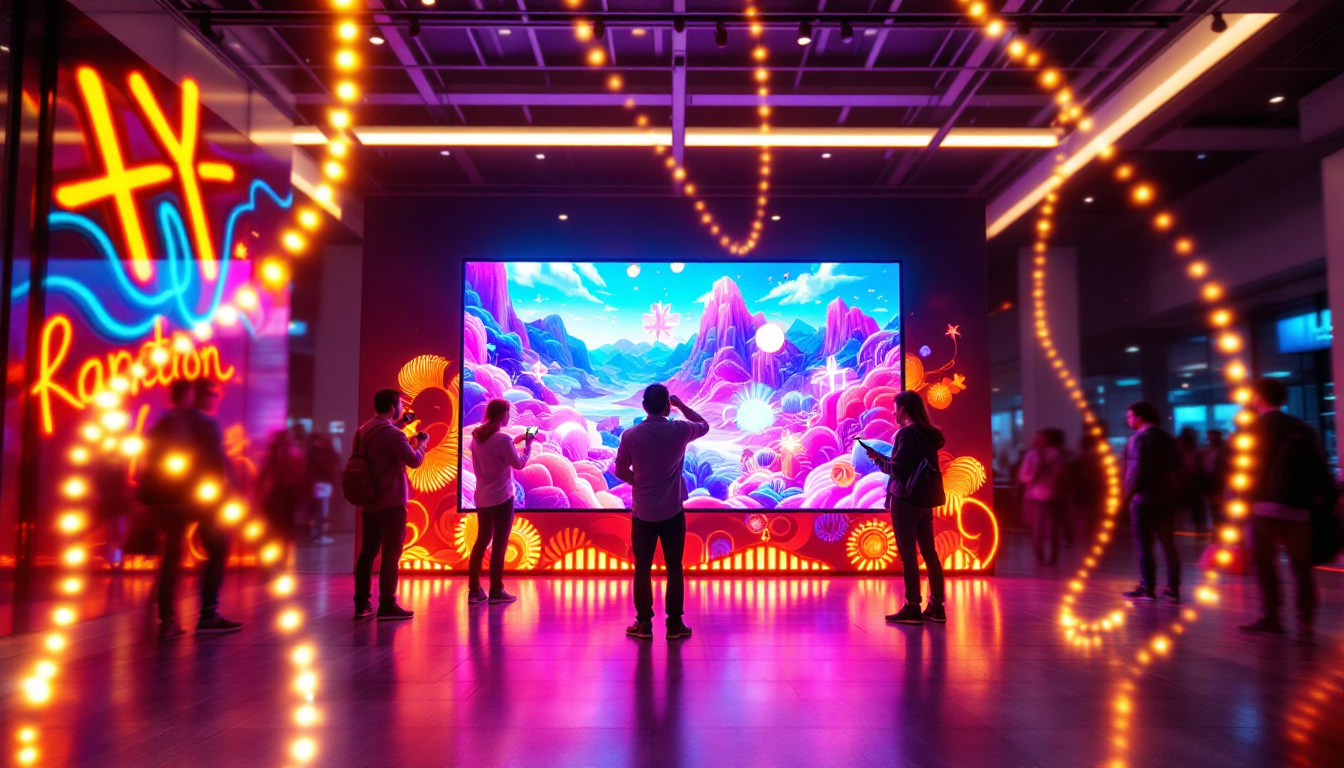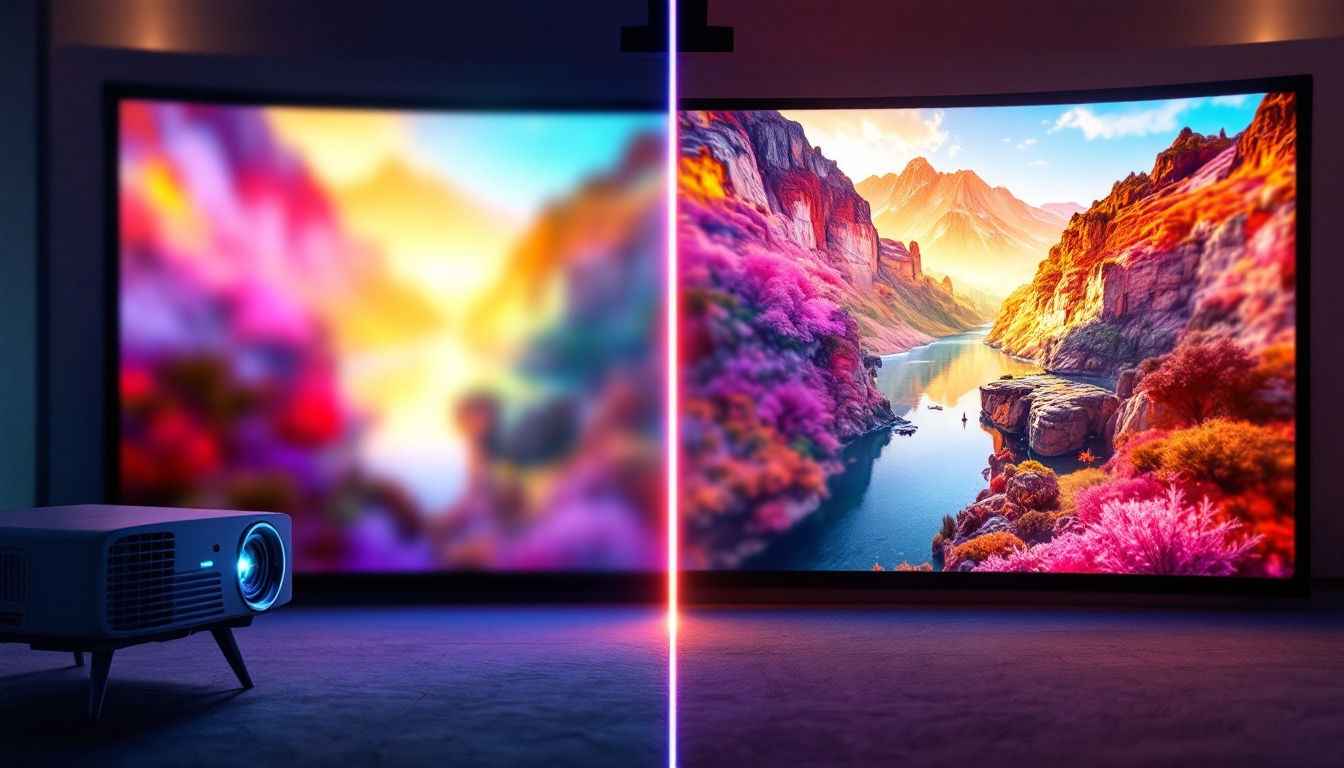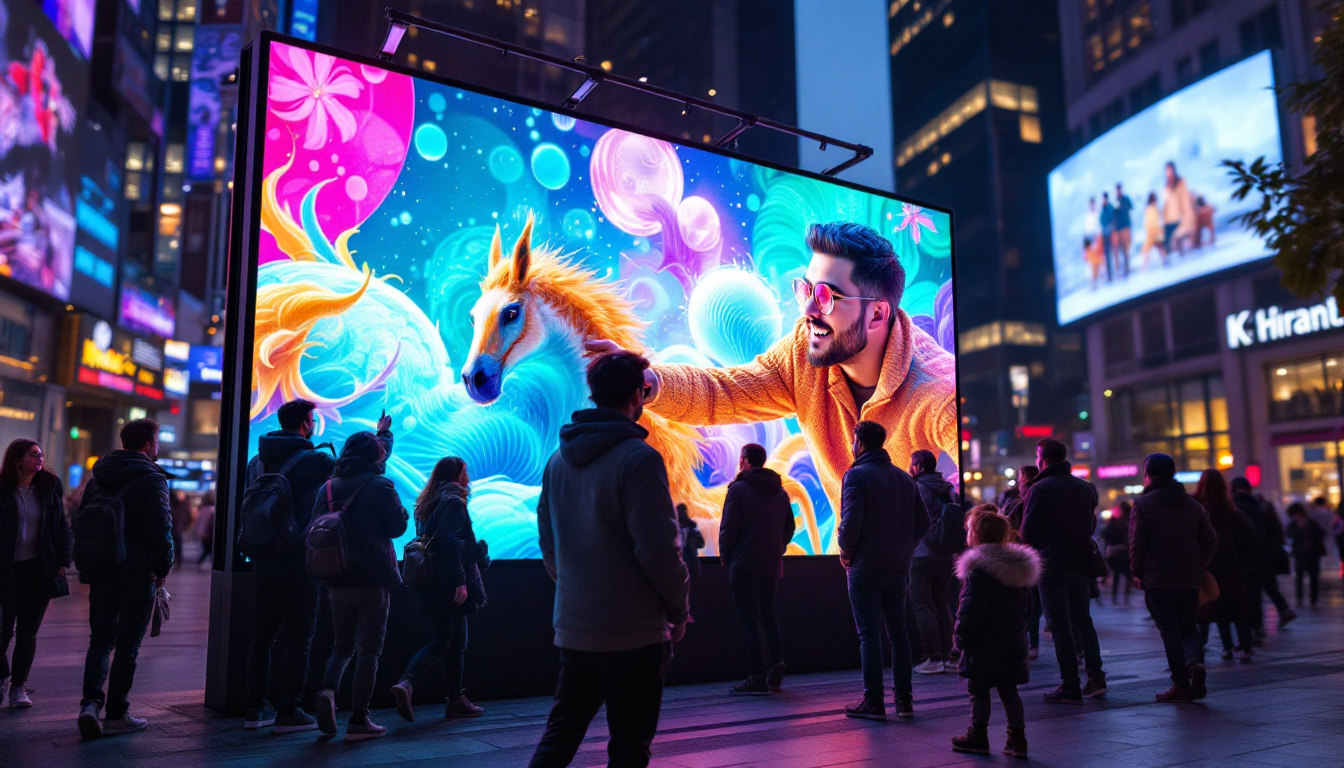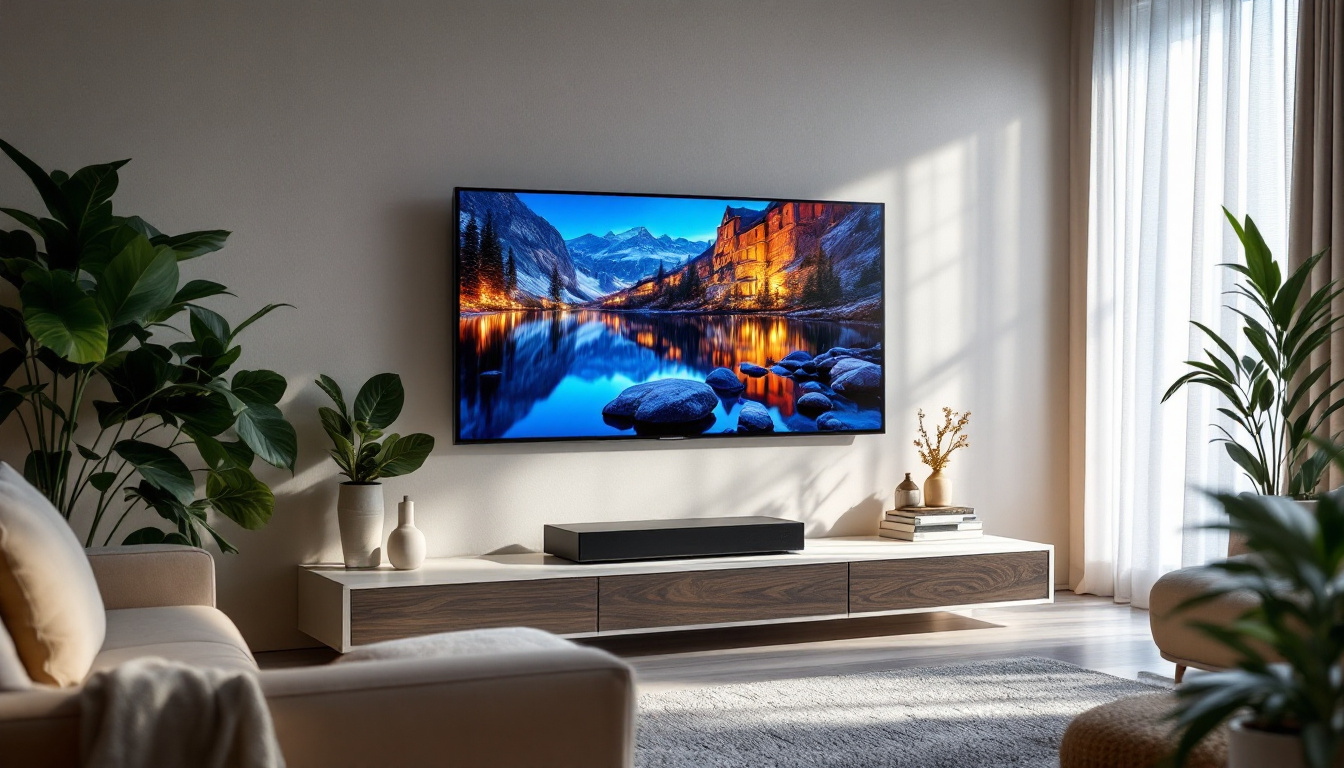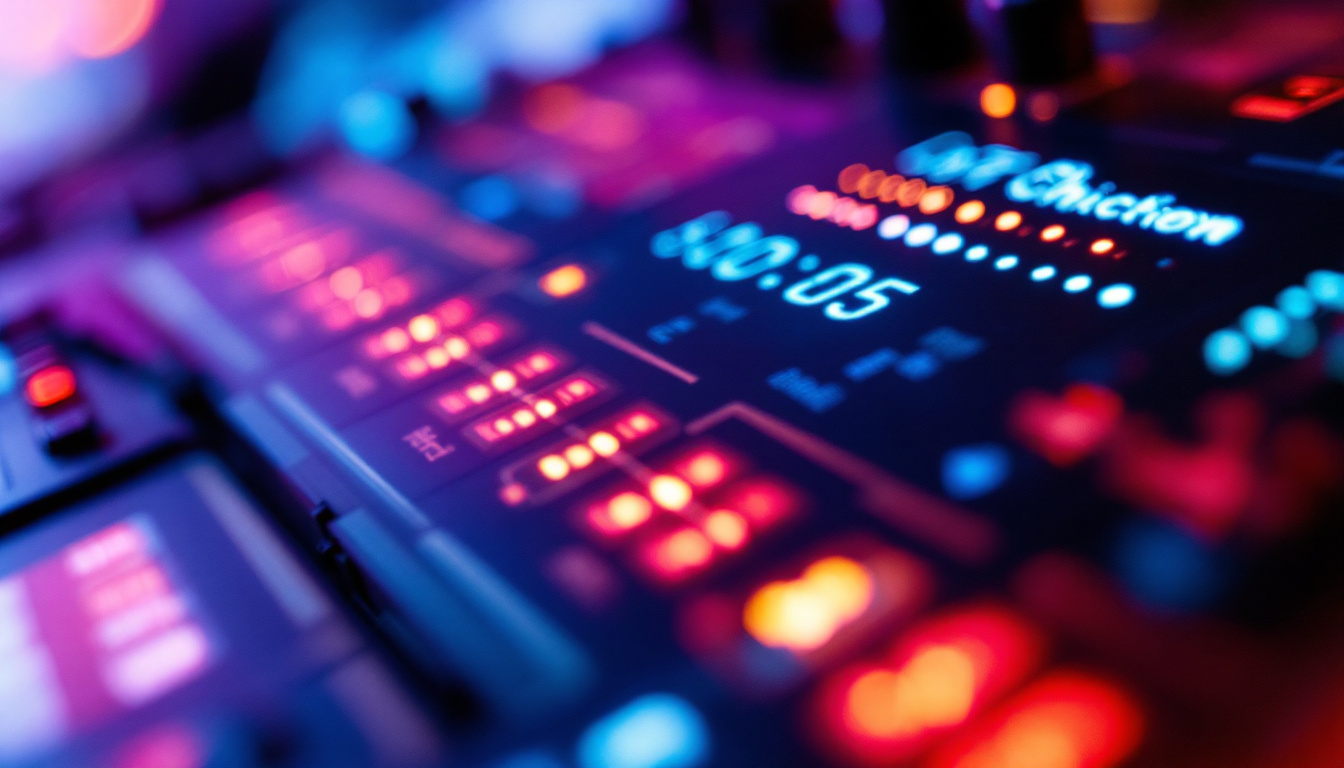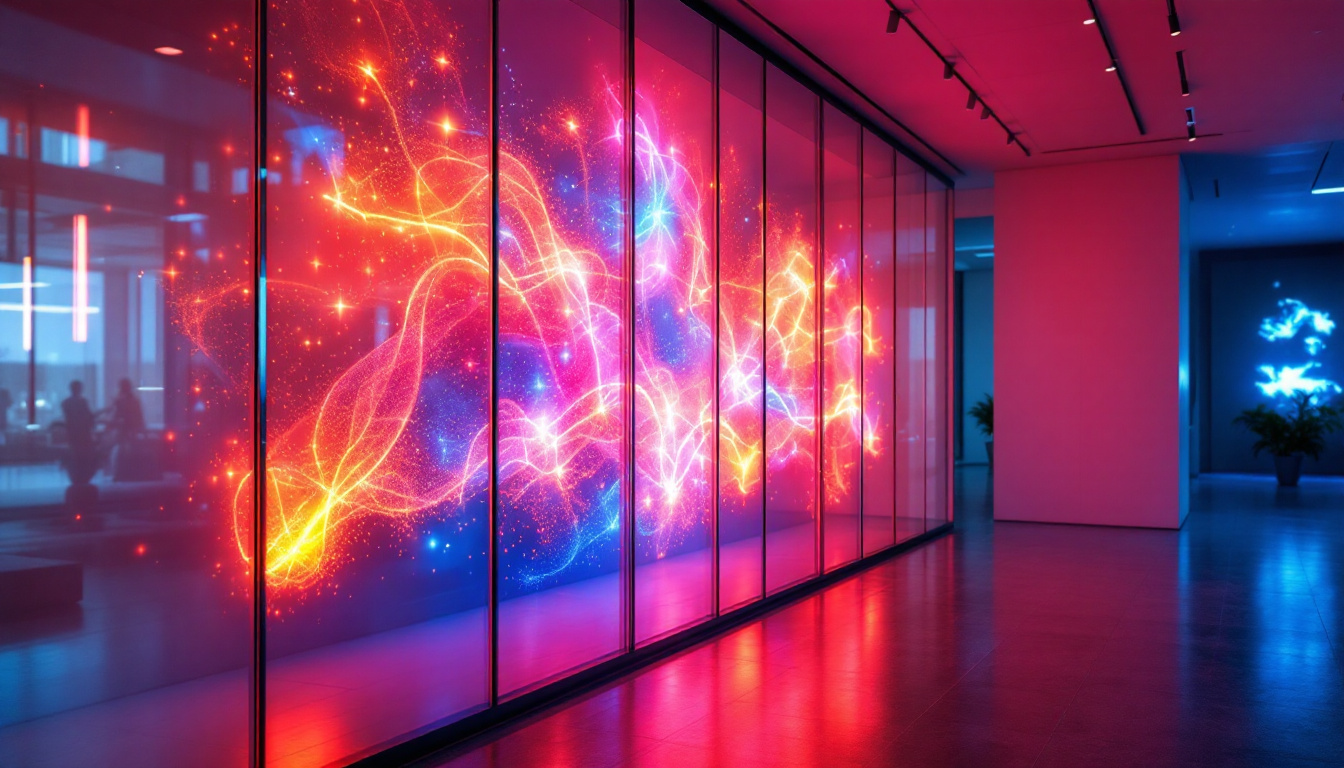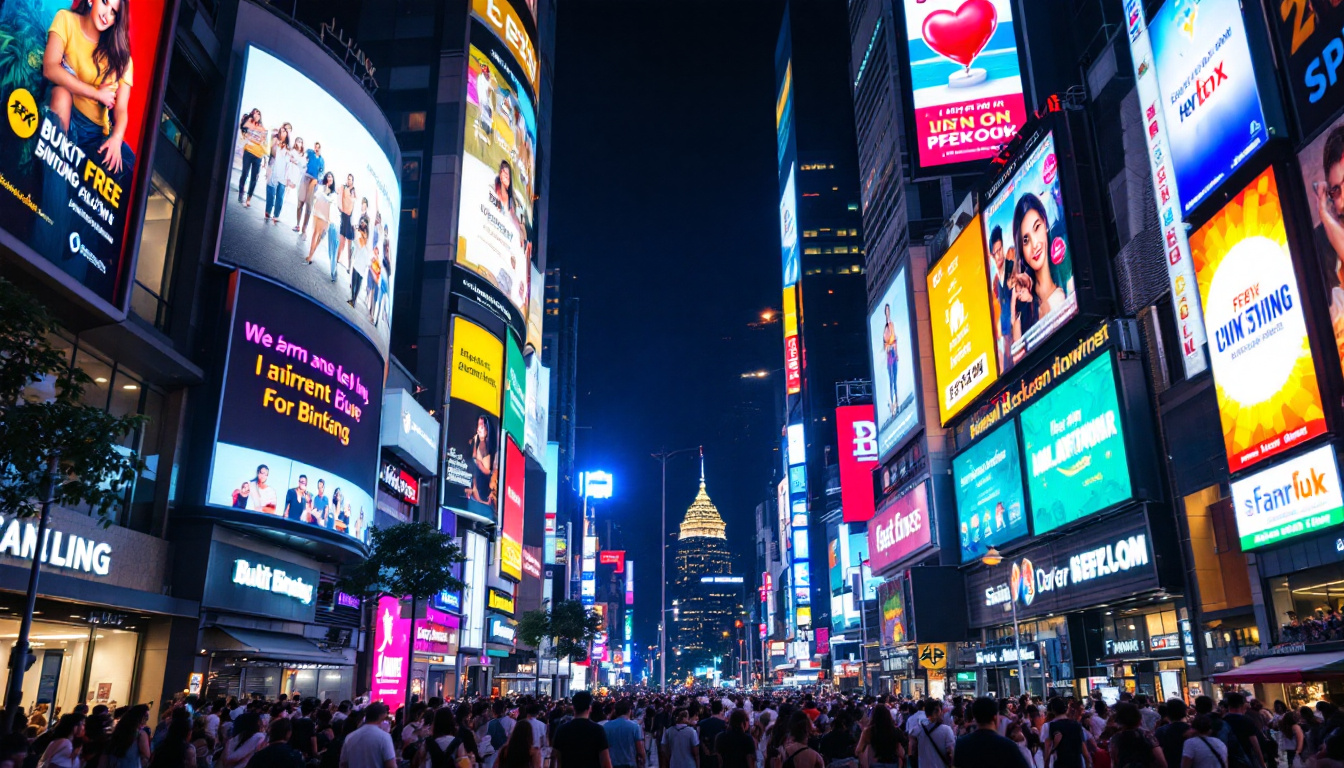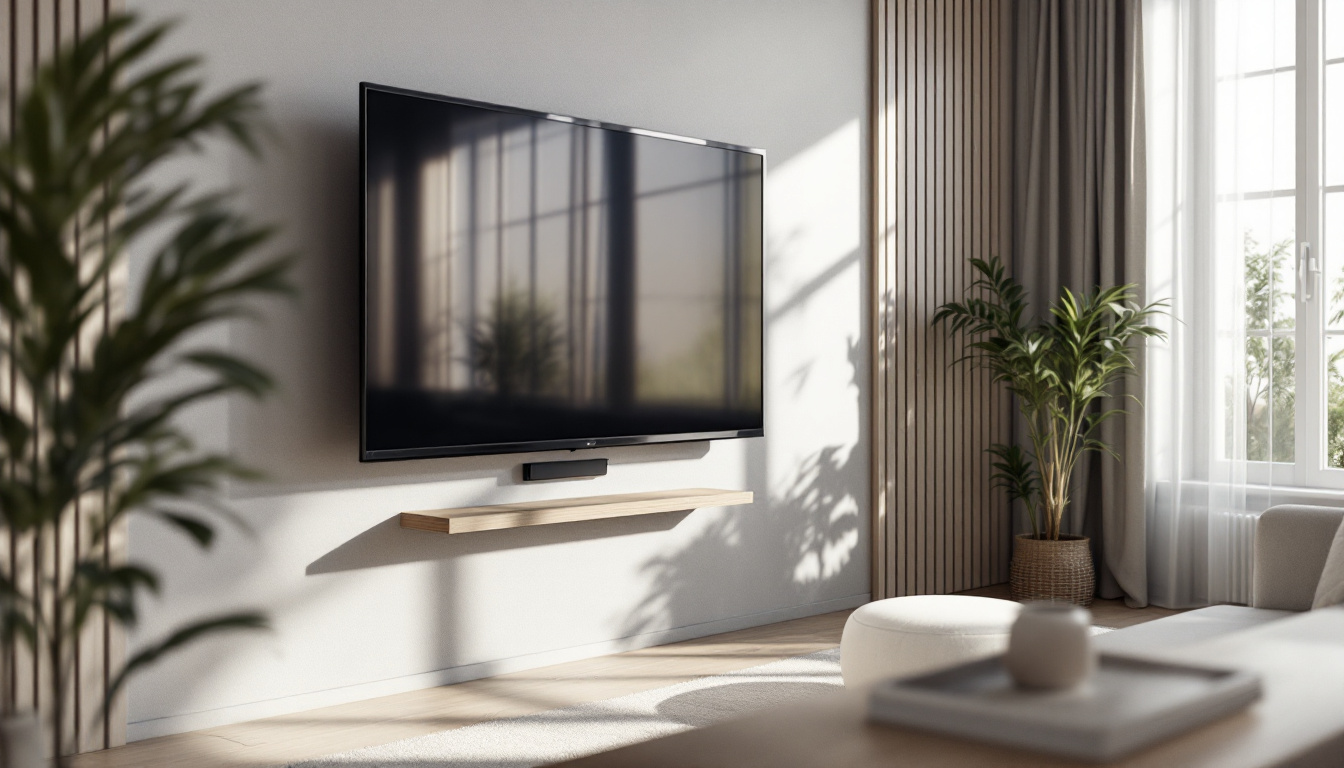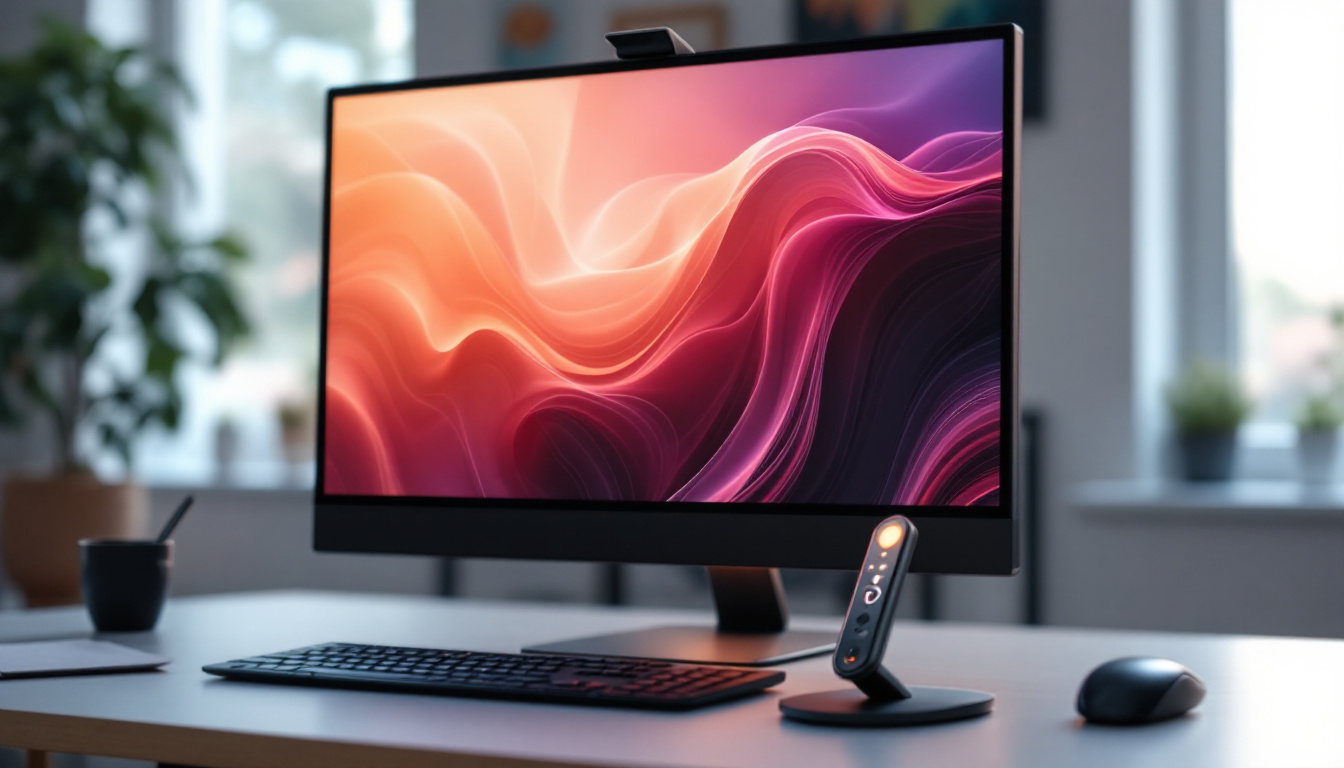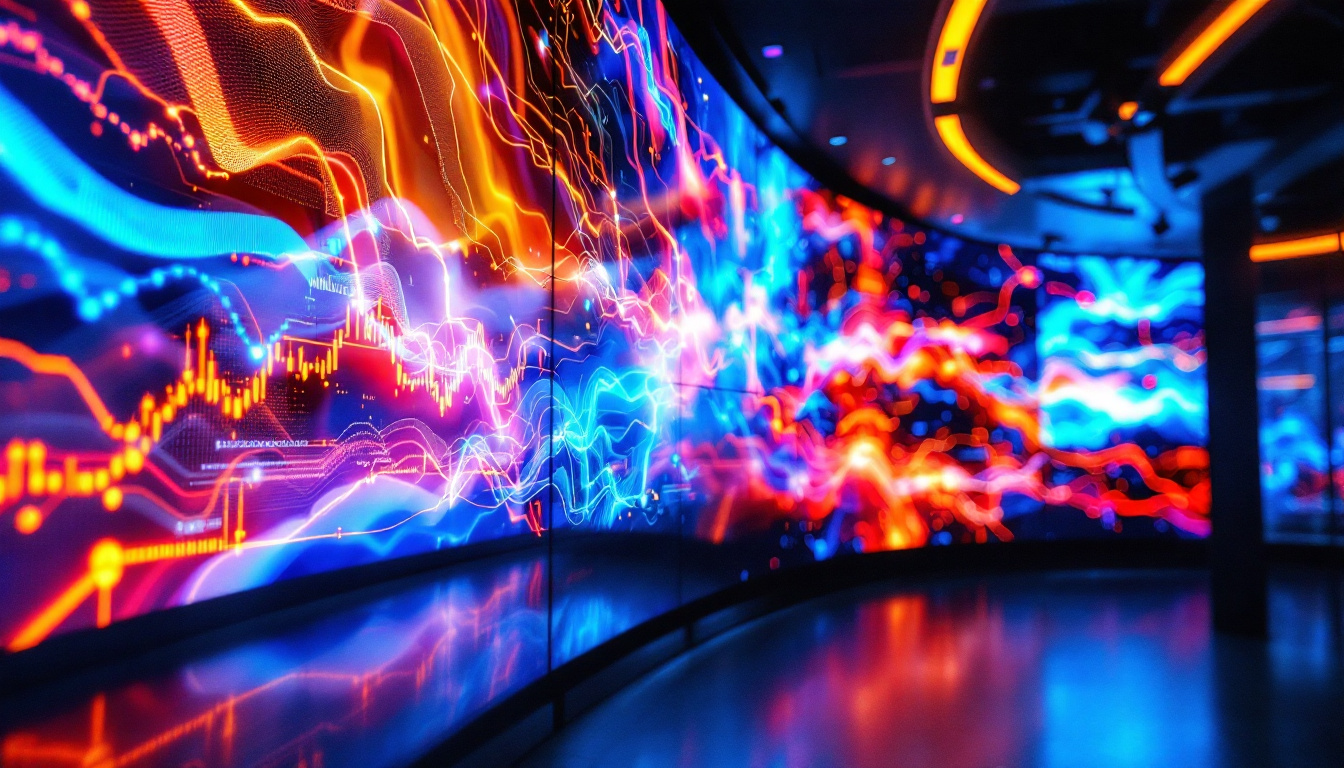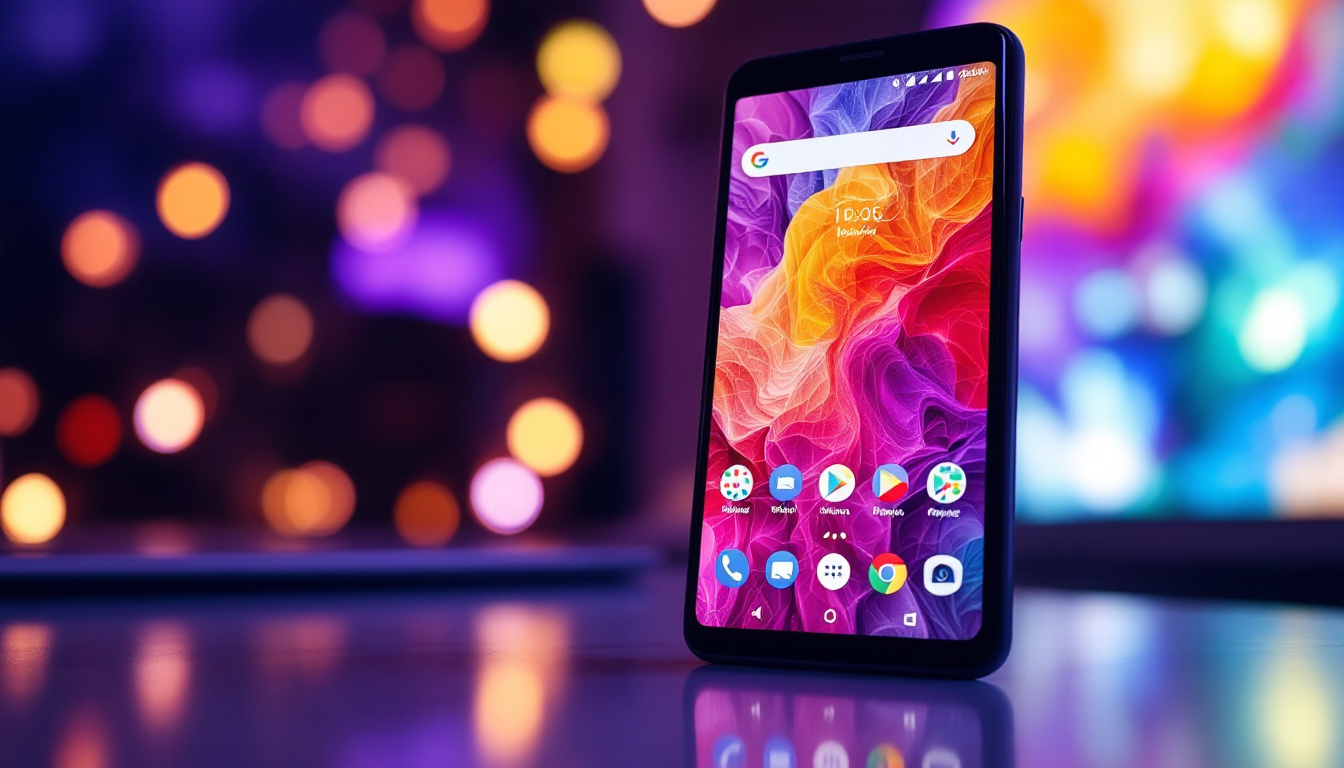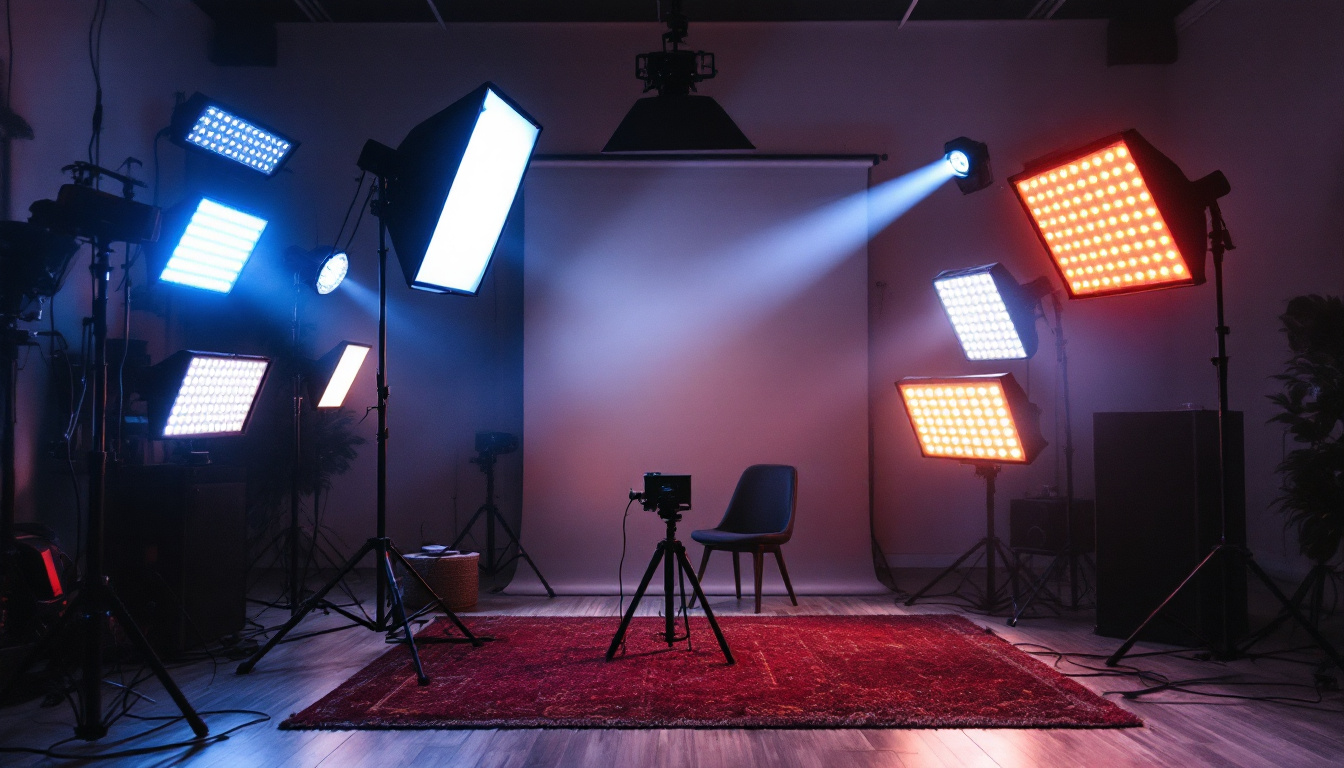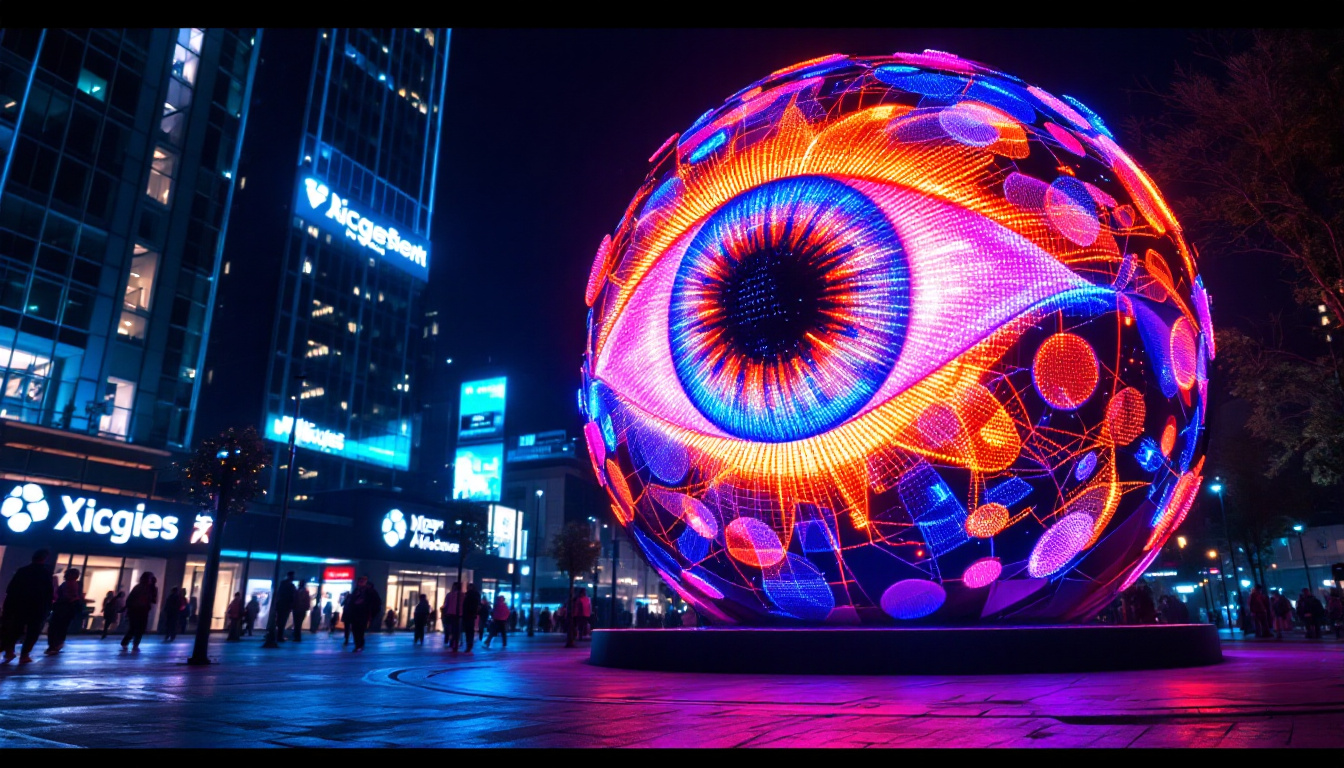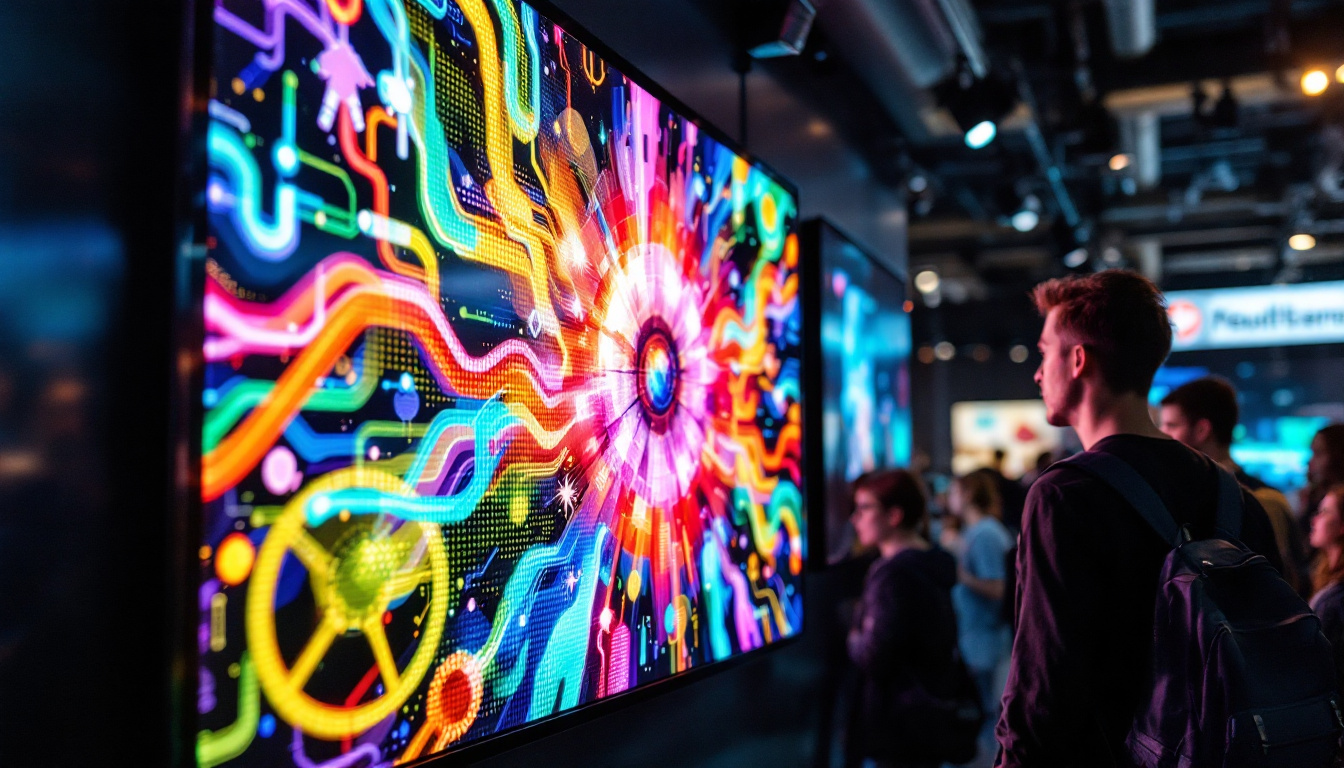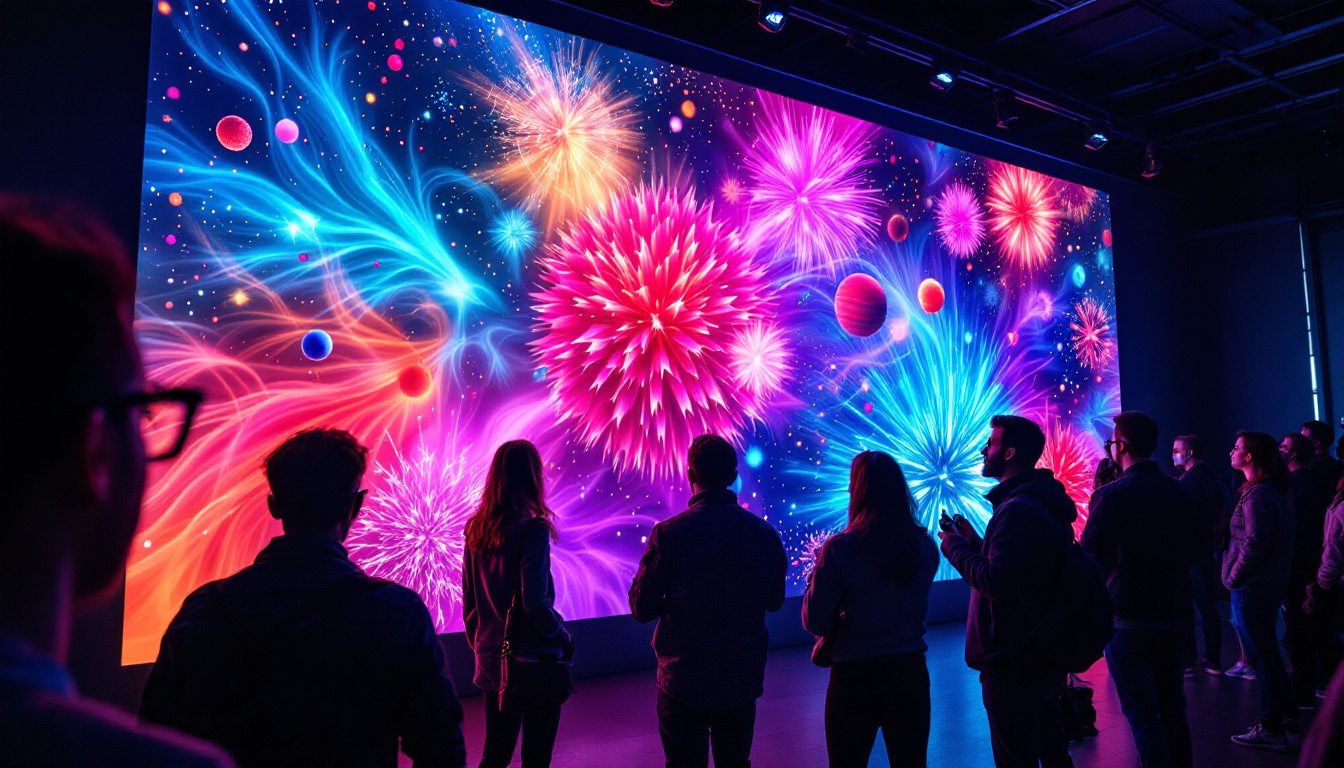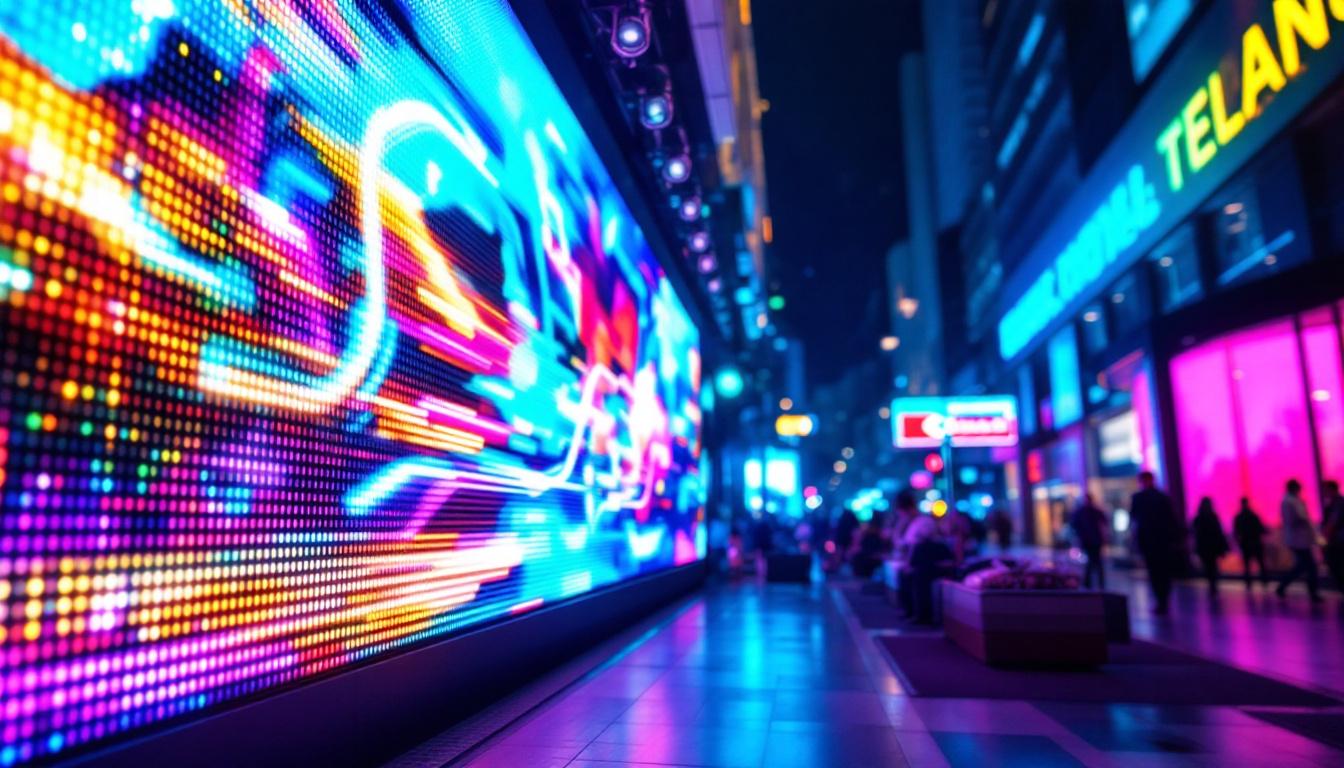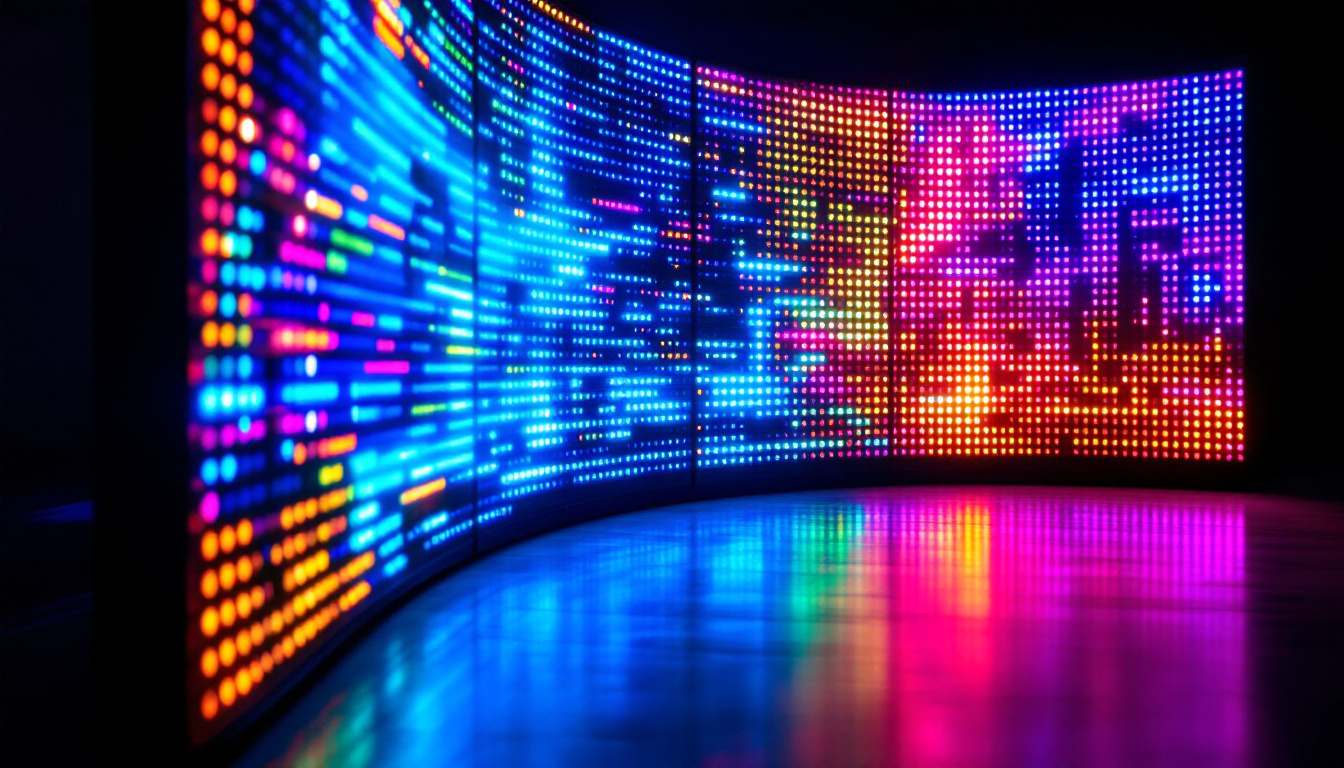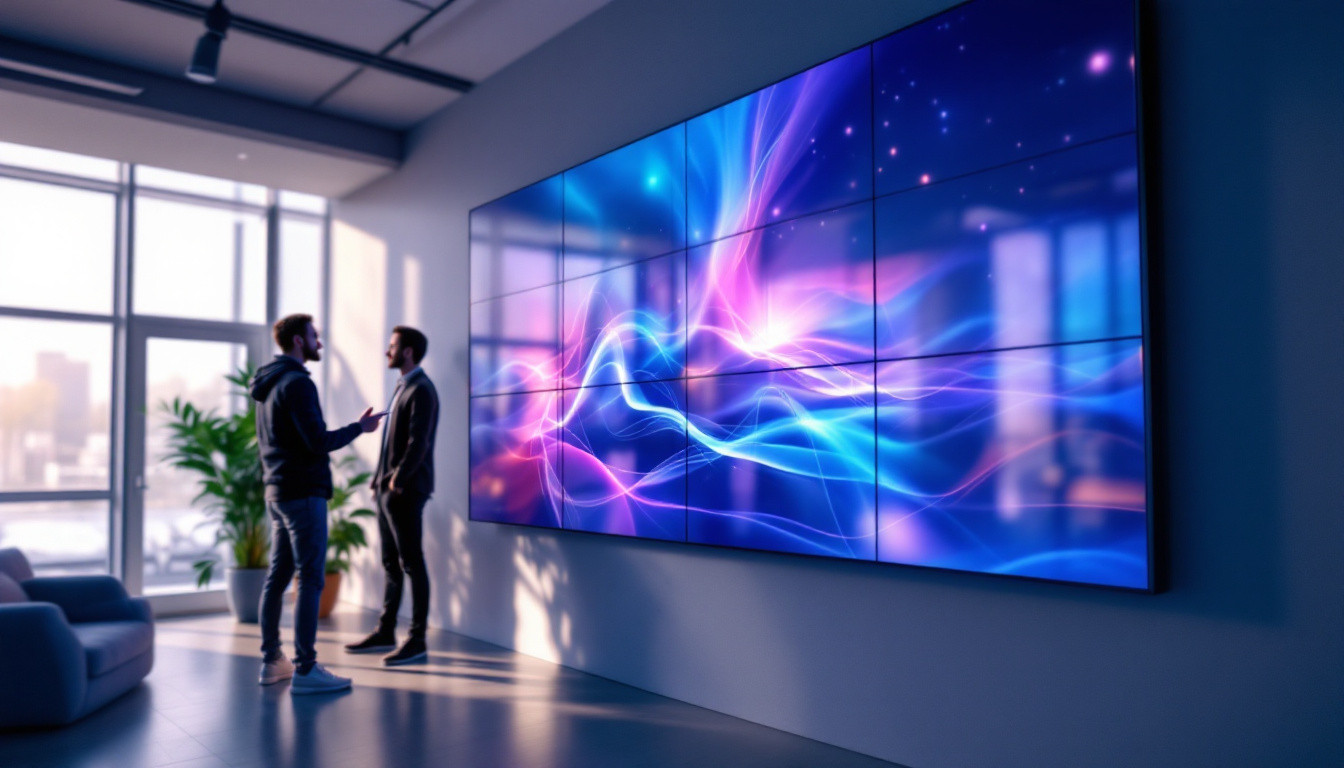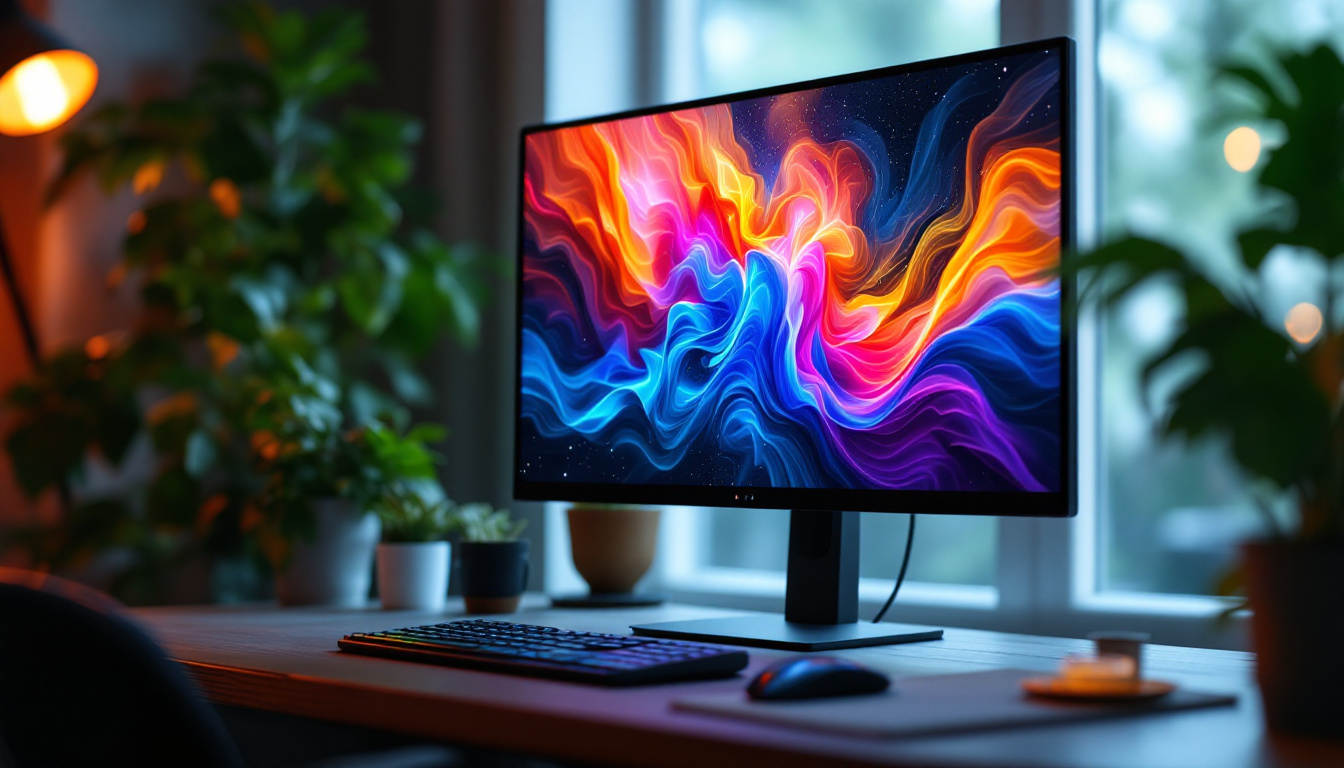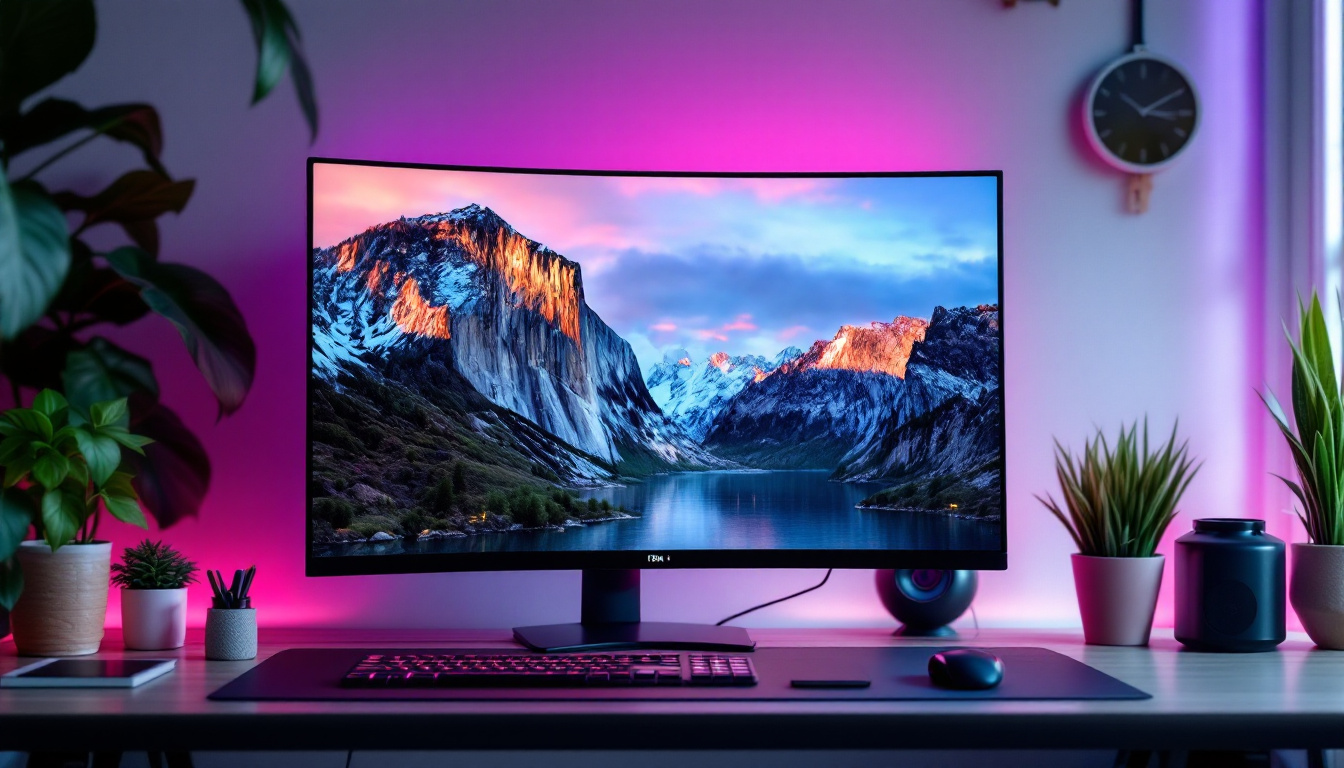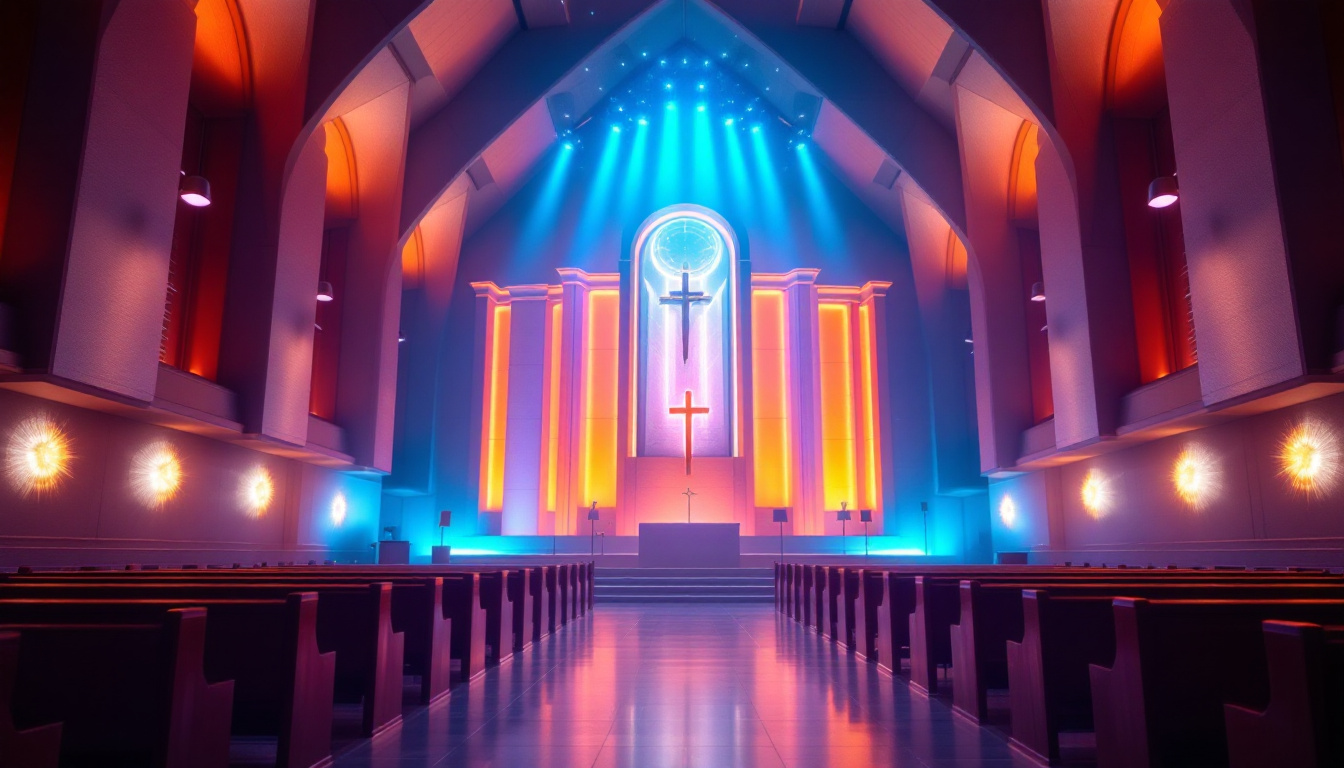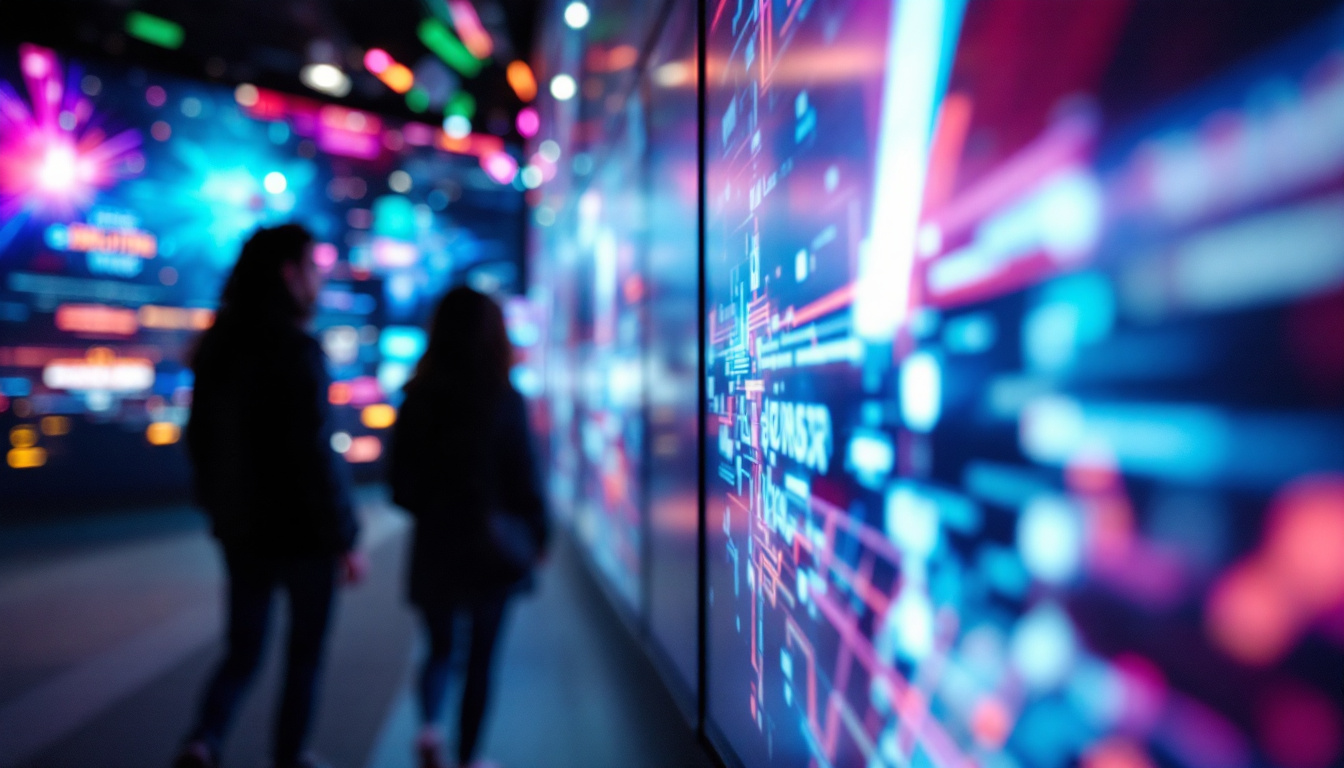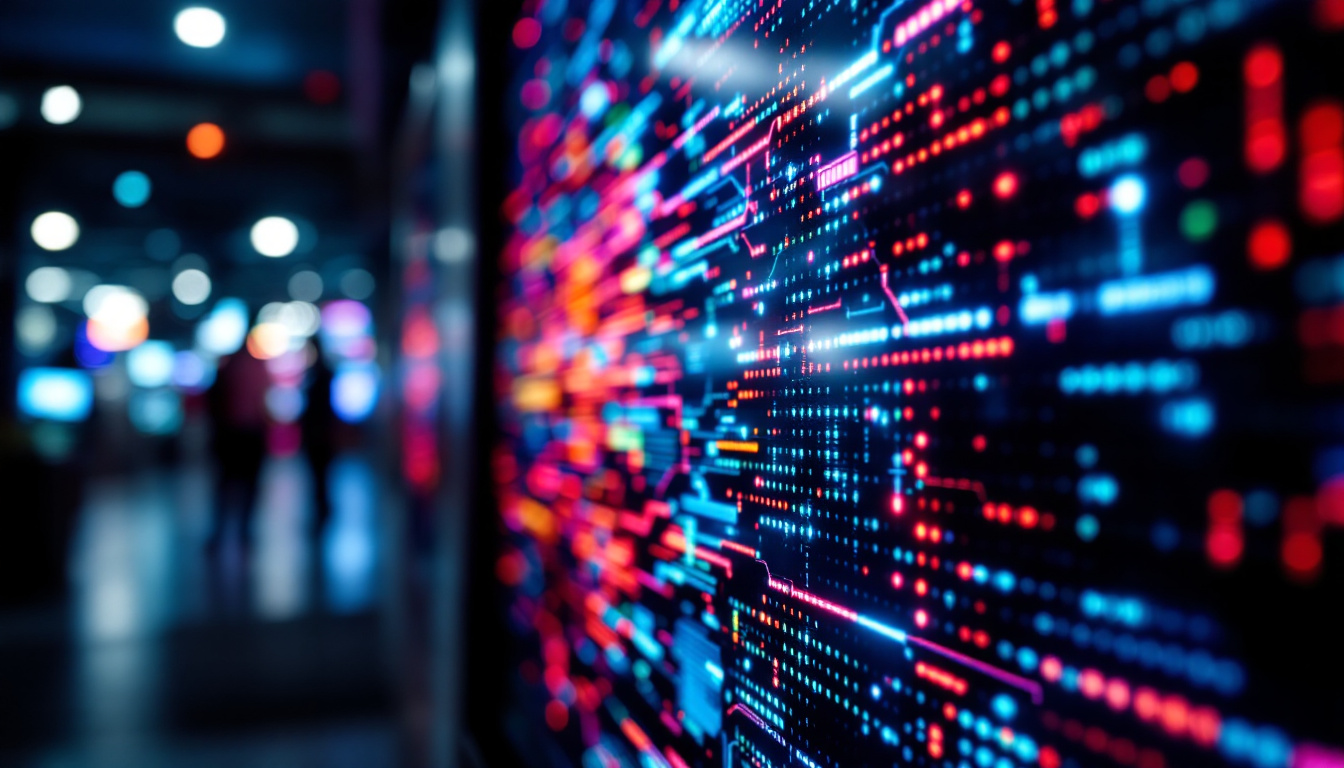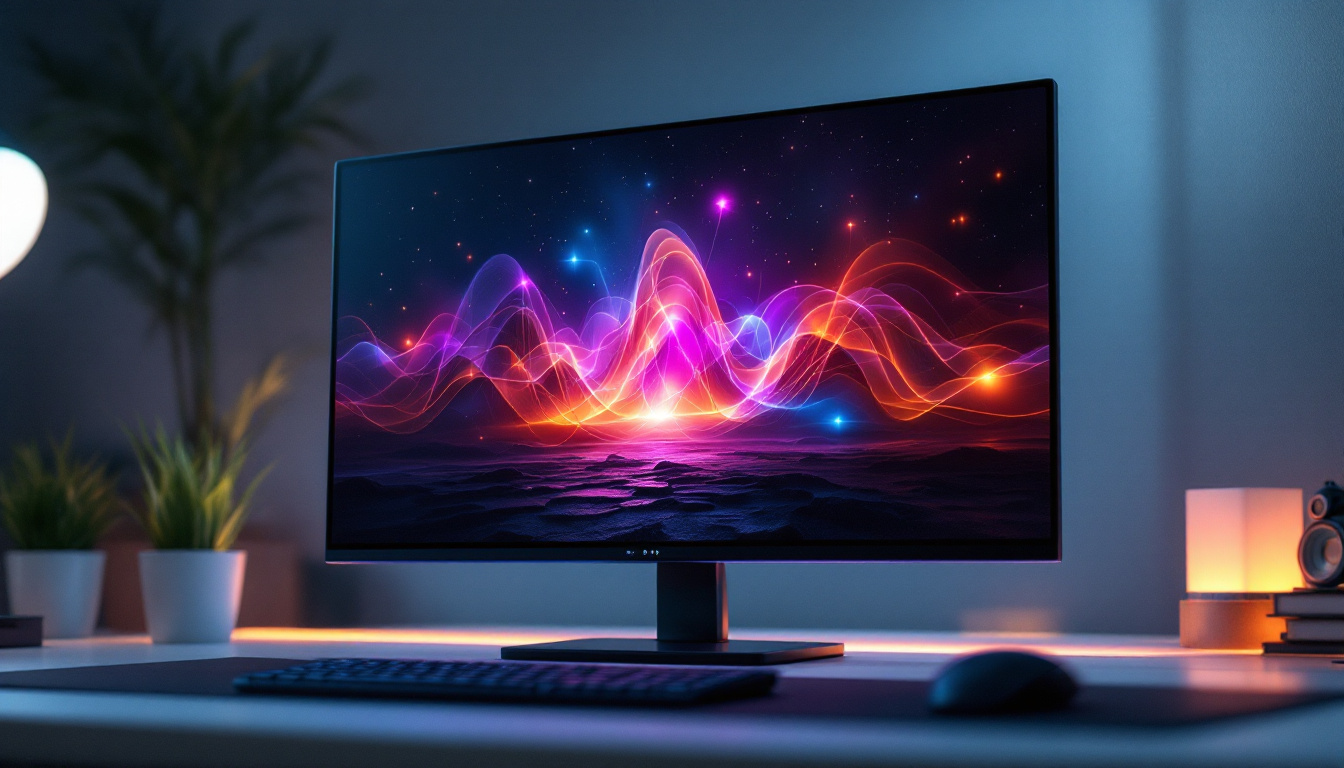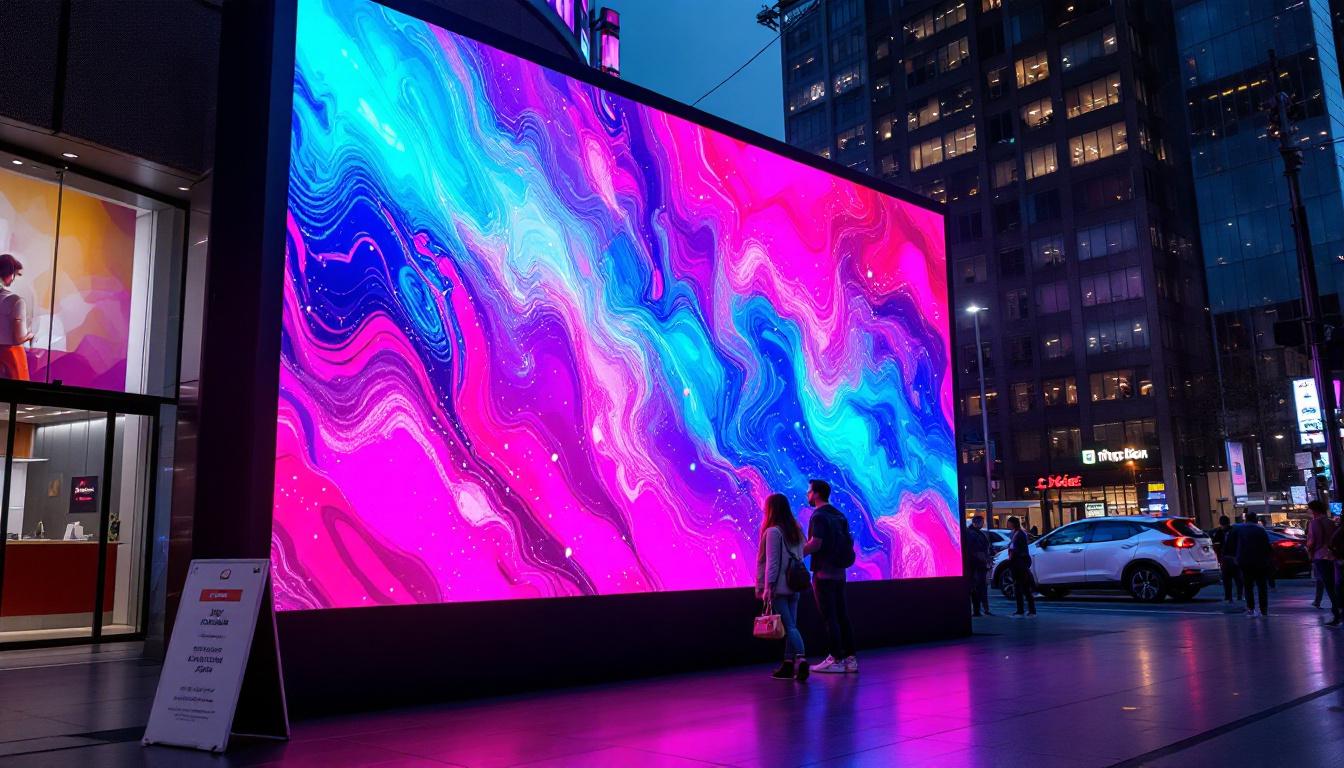In the modern world of technology, LED displays have become a vital component in various applications, from advertising to art installations. Among these, custom light panels stand out due to their versatility and aesthetic appeal. This article delves into the intricacies of custom light panels, exploring their design, functionality, and the technology behind them.
Understanding LED Technology
Light Emitting Diodes (LEDs) are semiconductor devices that emit light when an electric current passes through them. This technology has revolutionized the way we think about lighting and displays, offering numerous advantages over traditional lighting methods.
Advantages of LED Technology
One of the most significant benefits of LED technology is its energy efficiency. LEDs consume far less power than incandescent or fluorescent bulbs, making them an environmentally friendly choice. Additionally, they have a longer lifespan, often lasting tens of thousands of hours, which reduces the need for frequent replacements. This longevity not only translates to cost savings for consumers but also less waste in landfills, contributing to a more sustainable future.
Another advantage is the ability to produce a wide range of colors and brightness levels. This flexibility allows for creative applications in custom light panels, where designers can create dynamic and engaging displays that capture attention. Furthermore, LEDs can be dimmed without affecting their lifespan, enabling users to adjust lighting according to mood or activity, which is particularly beneficial in residential and commercial settings.
Applications of LED Displays
LED displays are utilized in various sectors, including advertising, entertainment, and even healthcare. In advertising, vibrant LED billboards attract consumers’ attention, while in entertainment, LED screens enhance visual experiences at concerts and events. The technology has also made its way into sports arenas, where large LED screens provide real-time updates and immersive viewing experiences for fans, further enriching the atmosphere of live events.
In healthcare, LED displays are used for patient monitoring and information dissemination. The ability to customize these displays means they can be tailored to meet specific needs, making them invaluable in various contexts. For instance, hospitals use LED screens to display important health information and alerts, improving communication between staff and patients. Additionally, the clarity and brightness of LED technology ensure that critical data is easily readable, even in brightly lit environments, thus enhancing patient care and safety.
Components of Custom Light Panels
Custom light panels consist of several key components that work together to create a cohesive display. Understanding these components is essential for anyone looking to design or implement an LED display.
LED Modules
At the heart of any LED display are the LED modules. These modules contain multiple LEDs arranged in a grid pattern, allowing for the creation of images and videos. The arrangement and density of these LEDs determine the resolution and clarity of the display.
High-density LED modules offer better image quality, making them suitable for applications where detail is crucial. Conversely, lower-density modules may be used for large-scale displays viewed from a distance, where fine detail is less important. The choice of LED technology, such as SMD (Surface-Mount Device) or DIP (Dual In-line Package), also plays a significant role in the overall performance and visual appeal of the display. SMD technology, for instance, allows for a wider viewing angle and better color mixing, enhancing the viewer’s experience.
Control Systems
The control system is another critical component of custom light panels. This system manages the input signals and translates them into visual output on the display. It can be programmed to show static images, videos, or dynamic content, depending on the requirements of the application.
Advanced control systems also allow for real-time updates, enabling users to change the content displayed without needing to physically alter the panel. This feature is particularly beneficial for advertising and event management, where timely updates are essential. Moreover, many modern control systems come equipped with user-friendly interfaces and software that facilitate easy content management, allowing even those with minimal technical expertise to operate the displays efficiently. Integration with cloud-based platforms can further enhance the functionality, enabling remote access and control from virtually anywhere.
Power Supply and Cooling Systems
LED displays require a reliable power supply to function effectively. The power supply must be capable of providing consistent voltage and current to the LED modules to ensure uniform brightness and color accuracy.
Additionally, cooling systems are often integrated into custom light panels to prevent overheating. LEDs generate heat during operation, and effective cooling is necessary to maintain performance and prolong the lifespan of the display. Various cooling methods, such as passive cooling through heat sinks or active cooling with fans, can be employed depending on the size and usage of the panel. The design of the cooling system is crucial, as inadequate heat management can lead to reduced brightness, color distortion, and even premature failure of the LEDs. Furthermore, some manufacturers are now exploring innovative cooling technologies, such as liquid cooling systems, to enhance efficiency and performance in high-demand environments.
Design Considerations for Custom Light Panels
When creating a custom light panel, several design considerations must be taken into account to ensure the final product meets the desired specifications and aesthetic goals.
Size and Shape
The size and shape of a custom light panel can significantly impact its effectiveness. Designers must consider the intended use and location of the display when determining these dimensions. For instance, a large, rectangular panel may be ideal for a billboard, while a smaller, circular design could be more suitable for an art installation.
Moreover, the shape of the panel can influence how the light is perceived. Curved or uniquely shaped panels can create more engaging visual experiences, drawing viewers in and capturing their attention.
Color and Brightness
Color and brightness are critical factors in the design of custom light panels. The choice of colors can evoke specific emotions and responses from viewers, making it essential to select a color palette that aligns with the intended message.
Brightness levels also play a crucial role, especially for outdoor displays that need to compete with natural sunlight. Custom light panels should be designed with adjustable brightness settings to ensure visibility in various lighting conditions.
Interactivity and Animation
Incorporating interactivity and animation can enhance the appeal of custom light panels. Interactive displays allow viewers to engage with the content, creating a memorable experience. This can be achieved through touch-sensitive technology or motion sensors that respond to viewer actions.
Animation can also bring static images to life, capturing attention and conveying messages more effectively. Designers should consider how movement and interaction can be integrated into the display to maximize engagement.
Installation and Maintenance of Custom Light Panels
Once a custom light panel has been designed, the next step is installation. Proper installation is crucial for ensuring the display functions correctly and is safe for use.
Installation Process
The installation process typically involves mounting the panel securely to a suitable surface, whether indoors or outdoors. This may require specialized equipment and expertise, particularly for larger displays. Additionally, ensuring that the power supply and control systems are correctly connected is essential for optimal performance.
During installation, consideration should also be given to the viewing angle and distance. Positioning the panel at the right height and angle can significantly enhance visibility and impact.
Maintenance Requirements
Maintaining custom light panels is vital for ensuring longevity and consistent performance. Regular cleaning is necessary to remove dust and debris that can accumulate on the surface, affecting brightness and clarity.
Additionally, periodic checks of the electrical components and connections can help identify potential issues before they become significant problems. Establishing a maintenance schedule can help keep the display in top condition and extend its lifespan.
Future Trends in LED Display Technology
The world of LED display technology is constantly evolving, with new innovations emerging regularly. Understanding these trends can provide insights into the future of custom light panels.
Smart LED Displays
One of the most exciting trends in LED technology is the rise of smart LED displays. These displays integrate advanced technologies such as artificial intelligence and the Internet of Things (IoT) to create more interactive and responsive experiences.
Smart displays can analyze viewer behavior and preferences, allowing for personalized content delivery. This capability can significantly enhance advertising effectiveness and user engagement.
Flexible and Transparent Displays
Another trend gaining traction is the development of flexible and transparent LED displays. These innovative designs allow for new applications, such as integrating displays into windows or creating curved screens that fit unique spaces.
Flexible displays can adapt to various shapes and surfaces, opening up creative possibilities for designers and architects. Transparent displays, on the other hand, can blend seamlessly into their surroundings, offering a modern aesthetic without compromising functionality.
Sustainability in LED Technology
As environmental concerns continue to rise, the focus on sustainability in LED technology is becoming more pronounced. Manufacturers are increasingly seeking ways to reduce waste and energy consumption throughout the production and lifecycle of LED displays.
Recyclable materials and energy-efficient manufacturing processes are becoming standard practices, ensuring that custom light panels are not only visually appealing but also environmentally responsible.
Conclusion
Custom light panels represent a fascinating intersection of technology, design, and creativity. With their numerous applications and the ability to capture attention, they have become an essential tool in various industries. Understanding the components, design considerations, and future trends of LED displays can empower businesses and designers to create impactful and engaging visual experiences.
As technology continues to advance, the possibilities for custom light panels will only expand, offering new opportunities for innovation and expression. Embracing these changes will be key to staying ahead in a rapidly evolving landscape.
Illuminate Your Space with LumenMatrix
Ready to transform your environment with the power of LED technology? LumenMatrix is at the forefront of LED innovation, offering a wide array of solutions that cater to your unique needs. From Indoor and Outdoor LED Wall Displays to specialized options like Vehicle and Sports Displays, our products are designed to make your brand shine and engage your audience. Experience the future of visual communication with our Custom LED Displays and All-in-One solutions. Check out LumenMatrix LED Display Solutions today and elevate your visual storytelling to new heights.

